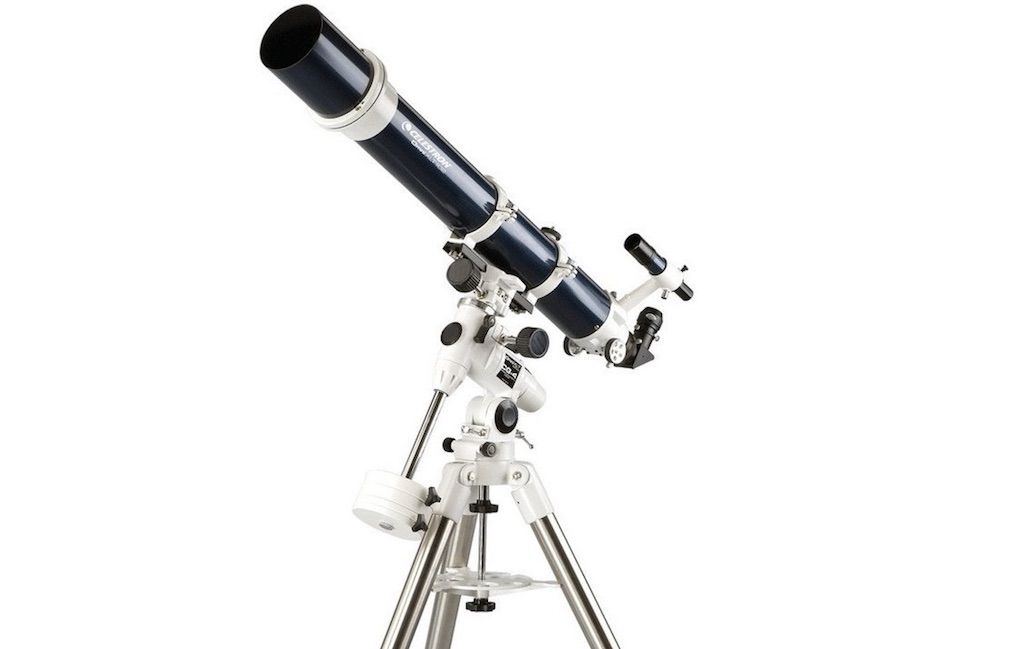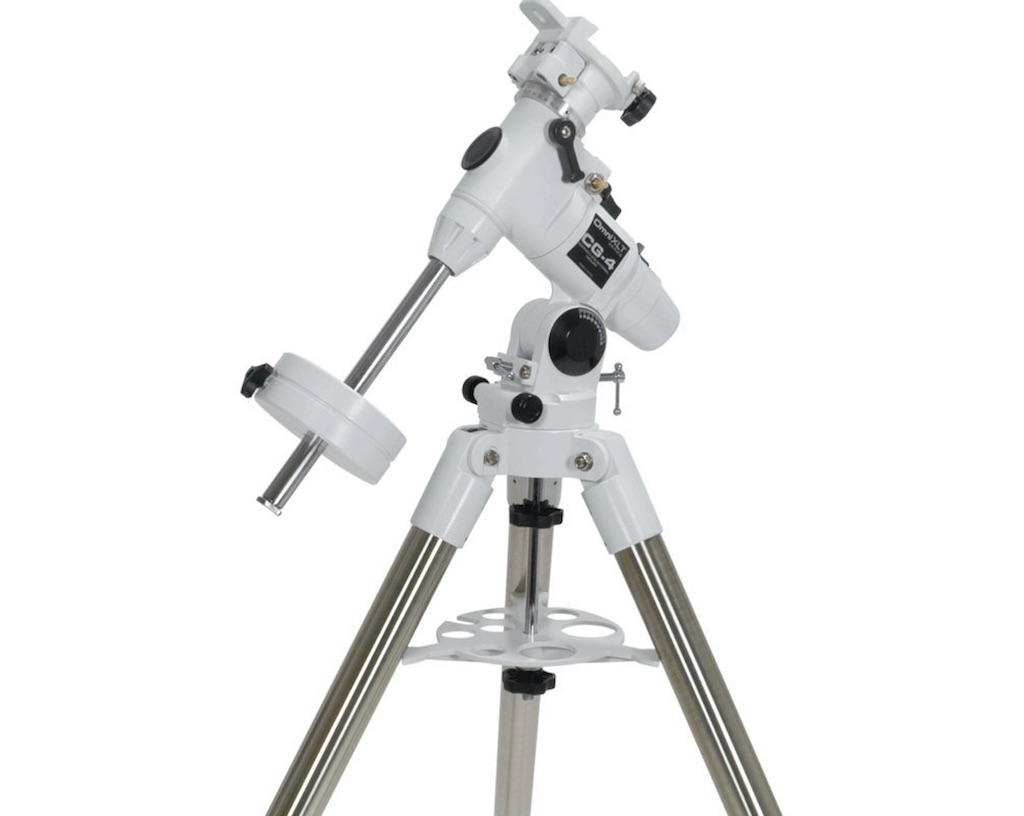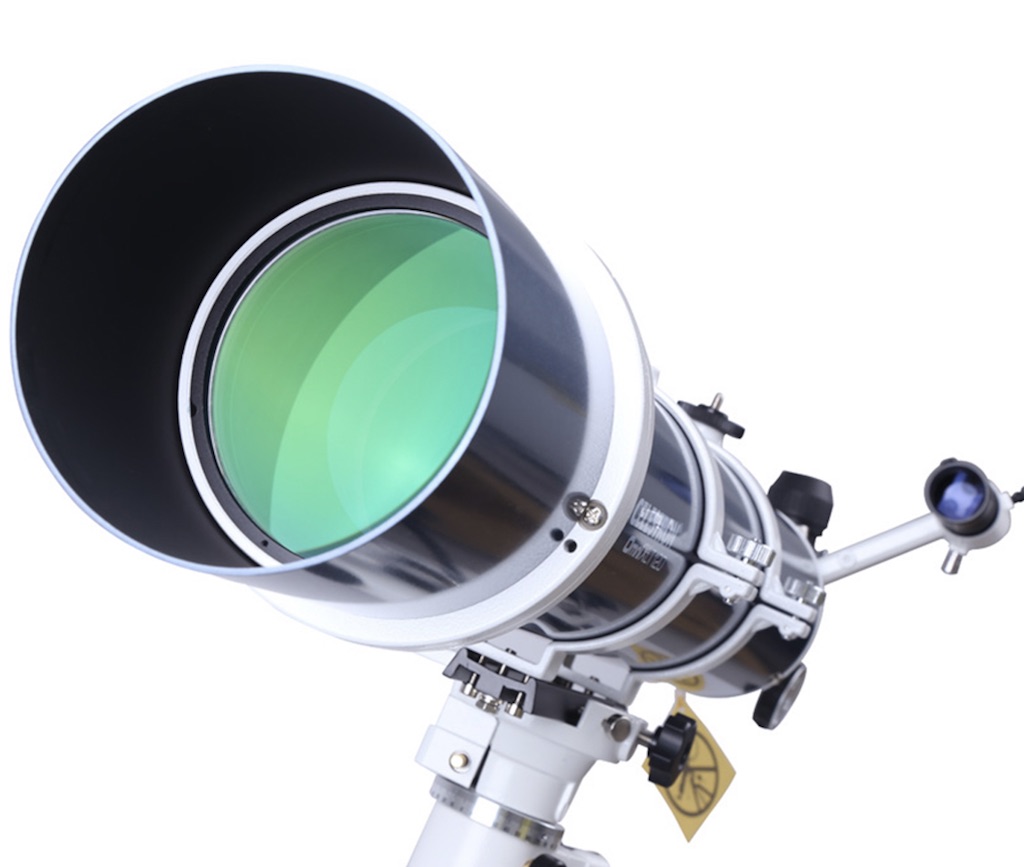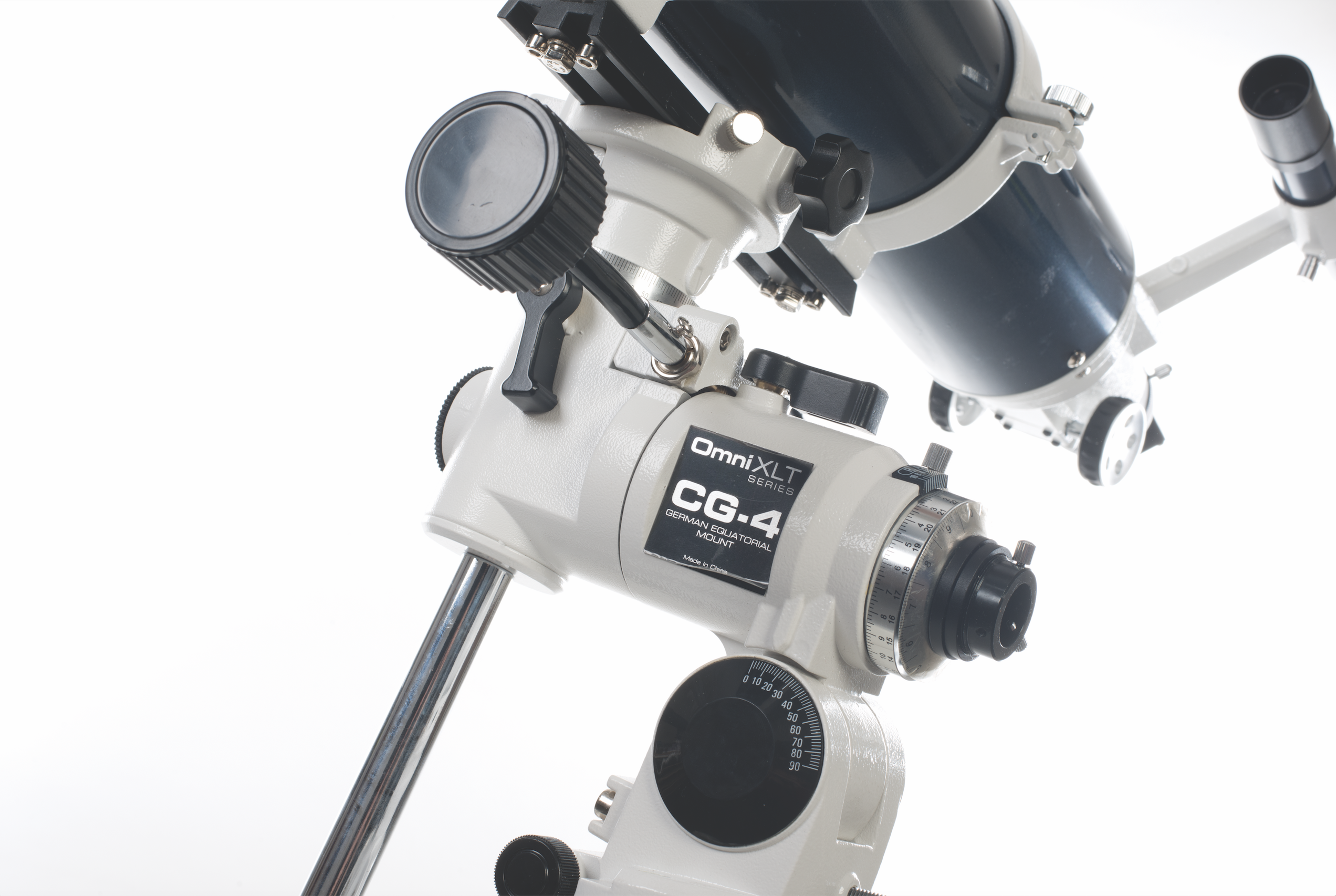Space Verdict
The Celestron Omni XLT 120 is made for the seasoned skywatcher, who is looking for that sought-after combination of high-quality build and superb views of the solar system and lunar surface. While a degree of false color is visible when observing bright targets, light transmission is excellent through the optical system and provides fantastic sights of the night sky: Jupiter and the moon were particular hightlights. The equatorial mount stole the show in both operation and build during our observations but given its complexity, we advise having a good knowledge of telescopes before purchasing the Omni XLT 120. Disappointingly, the refractor isn't supplied with many accessories but it is easy to furnish with add-ons to make the most of the optics — just be mindful of the extra cost.
Pros
- +
Breathtaking solar system sights
- +
Superior, high-quality mount
- +
Sturdy and robust design
- +
Easy to accessorize for better views
Cons
- -
Few accessories supplied
- -
Design is not very portable
- -
Some optical defects
- -
Not very portable
Why you can trust Space.com
With the Celestron Omni XLT 120, the skywatcher gets a refractor that exudes quality. Aimed at intermediate-level astronomers with a reasonable knowledge of telescopes due to its complex German equatorial mount, this beautifully finished instrument promises to last for many years with a minimum level of maintenance.
The Omni XLT 120 features high-quality optics, painted with Celestron's StarBright XLT coating — to maximize light transmission — on the finest grade of glass. The optical system also makes use of aspheric shaping technology to minimize spherical aberration, a visual defect where incoming light is focused at different points. The result is that resolution and clarity are affected, causing blurry views of the night sky.
The refractor comes with a 25 mm eyepiece, 1.25-inch star diagonal, heavy-duty stainless steel tripod, accessory tray, spirit level, Starry Night Special Edition software and a 6x30 finderscope. That's a good amount of accessories to get started with, but the telescope will need further eyepieces to reach the optical system's highest and lowest useful magnifications of 241x and 15x.
Related: Best telescopes
Optical design: Refractor
Aperture: 4.02" (102 mm)
Focal length: 39.37" (1000 mm)
Focal ratio: f/9.8
Eyepiece 1 focal length: 25 mm (40x)
Total kit weight: 43 lbs. (19.50 kg)
Mount type: Omni CG-4 equatorial
Omni XLT 120: Design
- High-quality mount
- Supplied with few accessories
- Heavy build, not very portable
- Multi-coated optics
On unboxing, we noted that the Omni XLT 120 is of exceptional quality and design. Finished in a gunmetal blue pearl with white accents, the telescope's high-quality GC4 equatorial mount is the centerpiece of this instrument. It is streets ahead in workmanship compared to other refractors in the Omni XLT 120's price range.
Counterweights — a 7 lbs. (3.18 kilograms) and 4 lbs. (1.81 kilograms) — are also included along with slow-motion controls for stability and accurate night-sky navigation.
A word of warning: the German equatorial mount is not suitable for beginners without some experience of using telescopes. It's a professional mount that requires a good understanding of how to use setting circles as well as right ascension and declination coordinates.
Since you don’t need tools or fiddly screws and bolts to set up the telescope, it takes a mere five to ten minutes to put the Omni XLT 120 together. The overall build is stable with no sign of shaking or toppling over and, peering into the objective lens, the glass is beautifully coated. No residue of oil or glue is evident anywhere on the components.
One minor niggle is the rack-and-pinion focuser. While it is fashioned from high-quality metal and performs well, these focusers have a tendency to slip when holding heavy eyepieces and supporting cameras. We recommend replacing it with a Crayford focuser for optimum performance and fine-tuning your views.
The weight of the Omni XLT 120 is 43 lbs. (19.50 kilograms), making it less than portable for those looking to travel beyond their backyard — if you're a skywatcher who likes to chase the darkest of skies, then we recommend either searching for a more portable option or having a vehicle to hand for transportation.
Unfortunately, the Omni XLT 120 doesn’t come with a wide range of accessories apart from a star diagonal, finderscope and 25 mm eyepiece. But being versatile and having a useful maximum magnification of over 241x, the refractor will serve as a good instrument for years to come. The skywatcher won't outgrow it for some time.
The multi-coated 25 mm eyepiece has very good eye relief and we are delighted to see that it is of excellent quality and build — just like the telescope it slots into.





Omni XLT 120: First light and functionality
- Best suited to solar system and lunar views
- Excellent light transmission
- Minimal false color
- Optical halo visible around bright objects
The XLT 120 is a fine example of a small to medium-sized refractor and this became evident when we turned it to a selection of objects in a clear March night sky. With its aperture and focal ratio, this telescope is more suited to views of the solar system and moon, however, it offers good views of a selection of deep-sky targets.
We took advantage of a full moon. Slotting the supplied 25 mm eyepiece — which provides a magnification of 40x — into the 1.25-inch star diagonal, we were soon studying the lunar surface.
Related: Moon phases
The telescope’s lenses are of superb quality, the StarBright XLT coating ensured bright and crystal clear views as we toured craters and mare. Lunar rilles and mountains were also breathtaking. The Omni XLT 120 drinks plenty of light, so we recommend investing in a moon filter for good contrast.
Bright crater Aristarchus was a stunning sight, as were the craters Kepler, Copernicus and Tycho, whose rays — made when material was thrown up during their progenitor impacts — could easily be detected by the refractor.
As we slewed across the moon’s surface, we noted the ease with which the German equatorial mount allowed the telescope tube to move. The mount’s well-made stainless steel tubular tripod legs are exquisite, providing excellent support to the telescope and a good, solid base when combined with the counterbalance: the extra weighting is useful for those wishing to try their hand at basic astrophotography.
Sadly, we did notice a degree of false color — or chromatic aberration — which gave bright objects a blue-purple coloration. For the cost of the telescope, we did expect to see this through the optical system of the Omni XLT 120 but we were delighted to see that it wasn't as severe as we had feared. In fact, the chromatic aberration is so small that we quickly forgot about this minor problem in the telescope’s optical system.

Putting the 6x30 finderscope to the test, we noted the clear and sharp views when we used it to guide us to the very bright -1.46-magnitude star Sirius in Canis Major (the Great Dog). We noted that views were sharp across a good proportion, with only slight trailing off in clarity around the field of view's edge.
We were quick to move over to gas giant Jupiter and its four largest moons, Ganymede, Io, Callisto and Europa. The overall view is impressive and we were able to detect the gas giant's bands with ease, while its satellites appeared as specks of light either side of its brilliant disk.
We did note a halo around Jupiter, brought about by the Omni XLT 120's optical system, which unfortunately didn’t disappear until we fitted a blue filter — however, the planet's atmosphere stood out beautifully, playing up the cloud belts and the famous Great Red Spot.
With Venus making its dramatic presence in the sky, we took the opportunity to observe it. As with views of many bright objects, there is purple color fringing around the planet’s bland disk. However, we were able to make out a phase with 60% illumination as well as some atmospheric shading when we made use of a deep blue filter.
The red giant star Betelgeuse in Orion (the Hunter) kept its stunning orange-red colour at 40x. Meanwhile, the diffuse gas of the Orion Nebula (Messier 42) and its Trapezium Cluster were picked up easily with the additional help of averted vision. Both objects were picked out with impressive contrast and clarity, certainly a highlight of our tour of the night sky.
Omni XLT 120: Verdict
In terms of optical prowess, we can highly recommend the Omni XLT 120 — especially given the minimal color fringing when observing bright targets like Jupiter and Venus. Due to its aperture size and focal ratio, this refractor is best suited to solar system targets as well as fair views of bright nebulas and galaxies.
You don’t get a great deal in the way of eyepieces in the package, but you do get a high-quality build for a moderate price — one that will last for many observing sessions to come, while being versatile enough to be accessorized with a full suite of add-ons.
Due to the advanced mount, we do not recommend the Omni XLT 120 to skywatchers without prior experience of using a telescope — especially if the astronomer isn't familiar with setting circles and using right ascension and declination coordinates.
However, for those who feel they can make the most of what the Omni XLT 120 has to offer, it is a great piece of kit for the serious skywatcher looking to try their hand at astrophotography.
Join our Space Forums to keep talking space on the latest missions, night sky and more! And if you have a news tip, correction or comment, let us know at: community@space.com.

Gemma currently works for the European Space Agency on content, communications and outreach, and was formerly the content director of Space.com, Live Science, science and space magazines How It Works and All About Space, history magazines All About History and History of War as well as Science, Technology, Engineering, Arts and Mathematics (STEAM) kids education brand Future Genius. She is the author of several books including "Quantum Physics in Minutes", "Haynes Owners’ Workshop Manual to the Large Hadron Collider" and "Haynes Owners’ Workshop Manual to the Milky Way". She holds a degree in physical sciences, a Master’s in astrophysics and a PhD in computational astrophysics. She was elected as a fellow of the Royal Astronomical Society in 2011. Previously, she worked for Nature's journal, Scientific Reports, and created scientific industry reports for the Institute of Physics and the British Antarctic Survey. She has covered stories and features for publications such as Physics World, Astronomy Now and Astrobiology Magazine.










